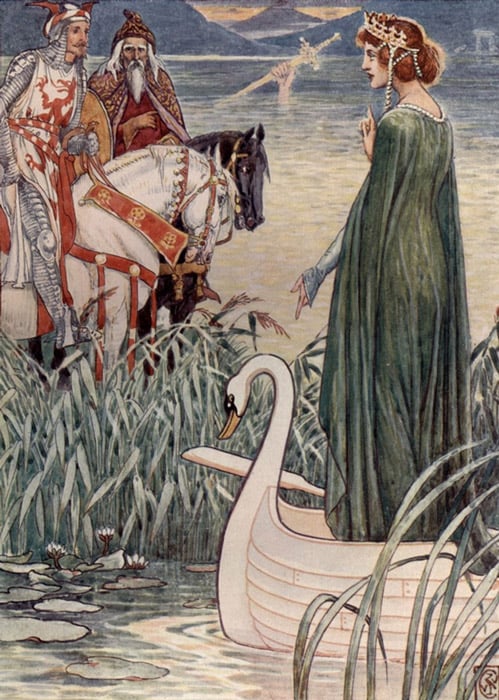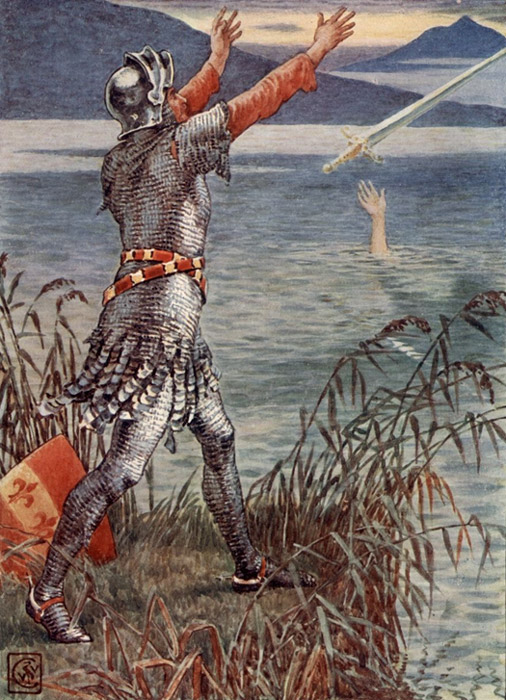Excalibur is another sword entirely. In the medieval Arthurian tales, Merlin takes Arthur to receive this marvelous weapon from a mysterious water nymph called the Lady of the Lake. And when the king ultimately lies dying on the field of battle, Excalibur is thrown into an enchanted pool, where the Lady of the Lake catches the weapon and takes it down into the watery depths. This theme probably developed from the ancient Celtic practice of casting prized belongings, such as swords, into sacred lakes and pools as offerings to a water goddess. Archaeologists have uncovered many such objects: for example, from the bed of the dried-up lake of Llyn Cerrig Bach on the island of Anglesey in North Wales. It is thought that warriors’ swords were thrown into such hallowed waters during funerals so as to assure the spirit’s safe passage to the afterlife.
Perhaps the most common mistake made by Hollywood in the portrayal of Arthur’s sword, be it Excalibur or the one connected with the stone, is to depict it as a long, medieval “arming sword,” commonly, but wrongly, referred to as a broadsword. Around the year 500, the period in which the story of Arthur is set, swords would have been much shorter, with a stunted cross-guard, such as the Roman-style cavalry sword, the spatha.
These were basically used for cutting down opponents from horseback, rather than for sword fights as depicted in the movies. The spatha seems to have been adopted as a sword of office by the post-Roman Britons, so if there was an historical Arthur then his sword would most likely have been one of these. (Read more.)
Share



















No comments:
Post a Comment